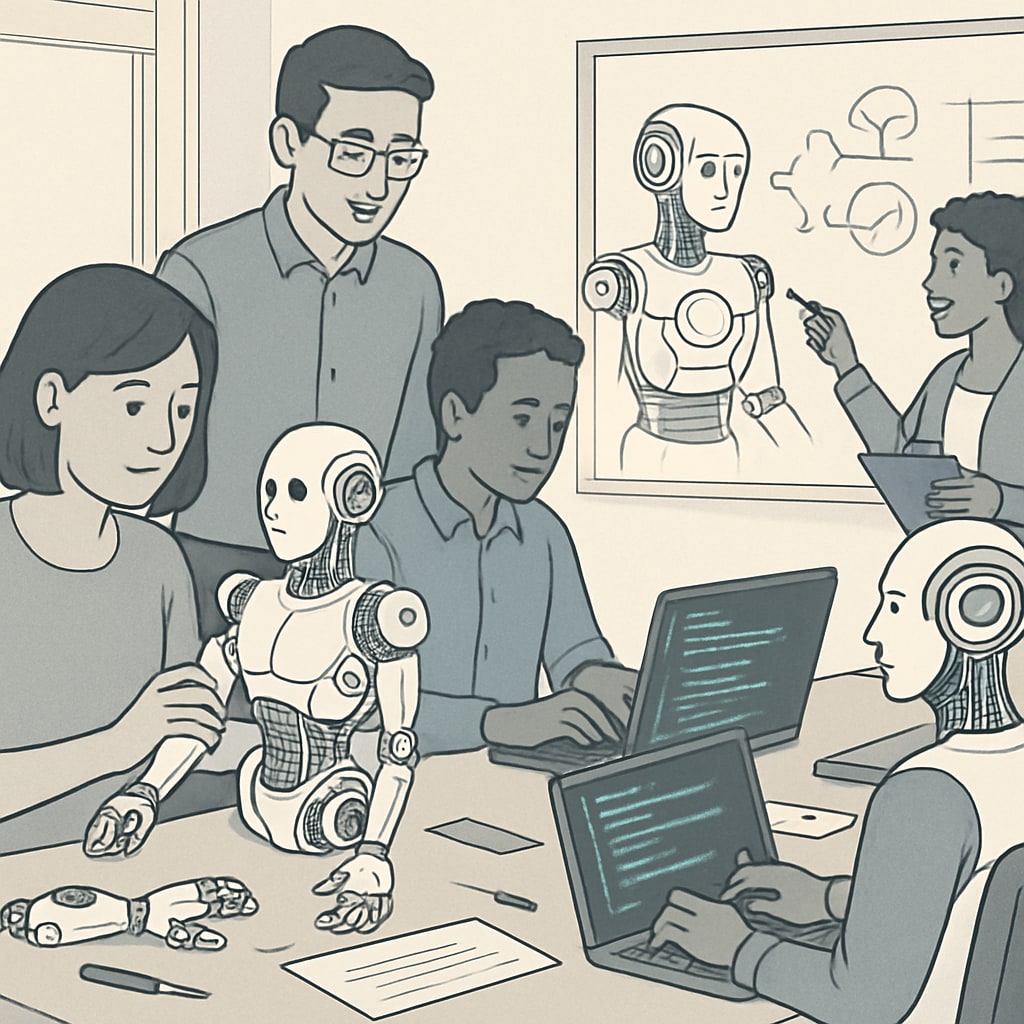In the modern world, artificial intelligence (AI) is reshaping industries and redefining career paths. For young minds, especially 8th-grade students, the decision-making process can be overwhelming. Questions like “Should I become a programmer or an engineer?” or “Will AI take over my career someday?” often dominate their thoughts. Understanding the dynamics of career choices and AI’s impact is crucial for making informed decisions.

Understanding the Programmer vs Engineer Debate
Both programmers and engineers play pivotal roles in the AI-driven world. Programmers focus on writing codes, developing software, and creating algorithms that enable AI systems to function. Engineers, on the other hand, design and build the physical or mechanical systems that integrate AI technology. While their responsibilities differ, both professions are crucial and intertwined in many AI advancements.
Here’s a simple comparison:
- Programmers: They excel in logic, problem-solving, and software development. Their work often involves creating AI applications and refining machine learning models.
- Engineers: They specialize in design, testing, and manufacturing systems. For example, engineers might create robots that rely on AI algorithms programmed by software developers.
Choosing between these paths depends on an individual’s interests and strengths, but both professions offer promising opportunities in the AI era.

AI’s Impact on Career Prospects
AI has sparked concerns about job displacement, but it has also created new opportunities. According to Wikipedia’s AI overview, automation may replace repetitive tasks, but it also generates demand for roles focused on creativity, problem-solving, and innovation. Engineers and programmers are at the forefront of these AI-driven roles.
For example:
- Job Evolution: Programmers may shift from coding simple tasks to developing advanced AI systems. Engineers might transition to designing intricate AI-enabled devices.
- Specialization: Both fields are evolving. Programmers are diving deeper into machine learning, while engineers are exploring AI-powered hardware systems.
As a result, while certain traditional jobs may face challenges, tech-related careers remain resilient and adaptive.
Practical Tips for Career Planning
For teenagers navigating the programmer vs engineer dilemma, here are practical steps:
- Self-Assessment: Understand your strengths and interests. Are you drawn to coding logic or mechanical design?
- Explore Early: Participate in workshops or online courses focused on programming languages (e.g., Python or JavaScript) and engineering basics.
- Stay Updated: Follow industry trends and tools. Platforms like Britannica’s AI section offer valuable insights.
- Seek Mentorship: Talk to professionals in both fields to gain clarity about their experiences and career trajectories.
- Adaptability: Embrace continuous learning. AI and tech fields are dynamic, requiring professionals to regularly update their skills.
By following these steps, young learners can navigate their career paths with confidence and prepare for a bright future in the AI-driven world.
The Future of Work in the AI Era
While concerns about AI replacing jobs are valid, the emergence of new roles and industries cannot be overlooked. The AI era demands talent that blends technical expertise with creativity and adaptability. Whether pursuing programming or engineering, teenagers should focus on developing transferable skills, such as critical thinking and collaboration, to thrive in evolving workplaces.
Ultimately, choosing between a programmer and an engineer career is not about avoiding AI’s impact but about leveraging its potential to drive innovation and growth.
Readability guidance: This article balances professional and accessible language for teenagers and educators. Short paragraphs, clear transitions, and simple lists enhance readability while maintaining depth.


